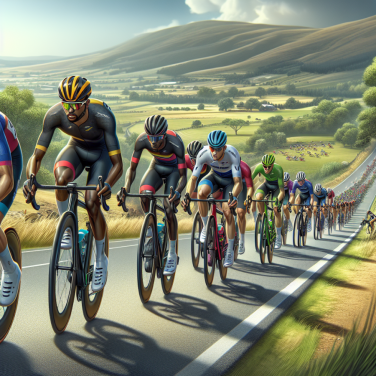How Contemporary Strategies are Shaping the Future of Rossall Hockey
In the ever-evolving world of competitive sports, Rossall Hockey stands as a testament to the harmonious blend of age-old tradition and avant-garde strategies. As we delve deeper into how modern approaches are influencing this storied game, it's evident that clubs, coaches, and players are all embracing innovation to elevate their performance.
Training and Development: Traditionally, Rossall hockey training relied heavily on repetitive drills and consistent practice sessions. Today, cutting-edge sports science and analytics have been seamlessly integrated into the training regimens. Coaches are utilizing data-driven insights to tailor individualized workout plans for players, optimizing their physical and mental prowess on the field. Video analysis tools are routinely employed to dissect gameplay and enhance tactical understanding, ensuring that the team can adapt dynamically to any in-game scenario.
Talent Acquisition and Scouting: The process of identifying promising talent has been revolutionized by technology. Modern scouting combines the keen eye of experienced talent scouts with sophisticated data analysis of player performance across various parameters. This has allowed Rossall Hockey teams to recruit skilled individuals who not only align with the traditional values of the sport but also possess the attributes necessary to thrive in a modern competitive environment.
Equipment and Gear: Traditional Rossall hockey gear has undergone a significant transformation, guided by material science and ergonomic design. The modern player is outfitted with equipment that not only maximizes protection but also enhances athletic performance. Lightweight sticks crafted from composite materials provide improved handling and power, while advanced turf technology ensures that the playing field itself is consistent and conducive to the faster-paced game of today.
Game Play Tactics: Tactically, contemporary strategies have led to a more fluid and fast-paced version of the game. The emergence of more proactive and flexible formations allows teams to switch between defensive and offensive modes with greater ease. Coaches are employing complex strategies that are informed by real-time game analytics, enabling players to exploit the weaknesses of opponents and adjust their positions and roles on the fly.
Community and Fan Engagement: In the modern era, professional sports teams recognize the importance of engaging with fans and the community. Social media platforms and digital marketing are used to build relationships with supporters, keep them informed, and attract new followers to Rossall Hockey. This has added a new dimension to the sport, where the spirit and culture of the game extend beyond the field and into the digital sphere.
Nutrition and Recovery: Another facet where modern approaches have had a profound impact is in the nutrition and recovery protocols for players.
Read also:
Exploring the Role of PO (Putouts) in Baseball Dynamics
Exploring the Historical Roots of Rossall Hockey
Rossall Hockey, a unique game that blends elements of soccer, rugby, and field hockey, traces its origins to the mid-19th century. The game evolved at Rossall School in Lancashire, England, where it was created to keep students active during the colder months. This distinct sport, though not as widely recognized as its mainstream counterparts, offers an intriguing glimpse into the evolution of team sports played in schools.
The game began as an adaptation of the 'House Game,' which was similar to soccer but allowed for the handling of the ball. As the sport evolved, it took on characteristics of rugby, which was also growing in popularity in British schools at the time. Students at Rossall School, wanting to create a game that could be played on the sand as well as on the grass, modified these rules further to suit their coastal environment. This led to the development of a sport that was uniquely suited to the windy beaches by the school.
Rossall Hockey's rule system has some unique elements, including the use of a 'corker,' a cricket ball encased in hand-stitched leather, which is heavier than a traditional hockey ball. The weight of the corker makes the game profoundly different from other field sports, necessitating a particular set of skills and strategies.
The field of play is also distinctive. Traditional hockey fields are flat, smooth surfaces, while Rossall Hockey is often played on the uneven, sandy terrain of the beach. This irregular playing field adds a layer of complexity to the game, affecting how players move the ball and strategize their gameplay. Over time, the official rules for the game on grass were established, including a notable feature where the goals consist of two upright posts without a crossbar, similar to rugby goalposts, but with a net attached behind them.
Historically, the game was strictly confined to the boundaries of Rossall School, with its rules passed down through generations of students. The annual 'House Match' between the school's two houses, Pelicans and Eagles, remains a significant tradition and is one of the school's most anticipated events. This competition not only fosters school spirit but also preserves the legacy of Rossall Hockey, as each new cohort of players learns the rules and the rich history of their sport.
The modern play of Rossall Hockey, which could be described as a dynamic and sometimes rough sport, still reflects the historical roots embedded in British private school culture.




